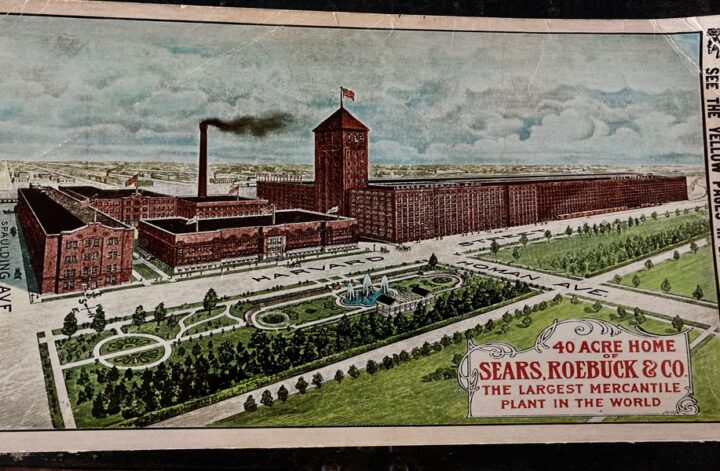According to the Sears Archive website, the first edition of what eventually became the Sears, Roebuck Catalog appeared in 1888. The company was then known as The R.W. Sears Watch Company. The renowned catalog began as a flier advertising the company’s watches and jewelry. The catalog as we know it actually began in 1894, with Richard Sears illustrating the cover of his catalog and calling it a Book of Bargains: A Money Saver for Everyone.
As each year went by, the catalog grew both in size and product lines. He wrote most of the content himself and included wording and information he hoped would appeal to his growing customer base. By 1896, a Spring and Fall catalog had been added. In 1887, Alvah C. Roebuck joined the company as a partner. At that point the catalog had grown to include cars, washing machines, groceries, and the Encyclopedia Britannica. In fact, the offerings had grown to the point where the catalog itself grew in size from 6”x 9” to 8” x 11”.
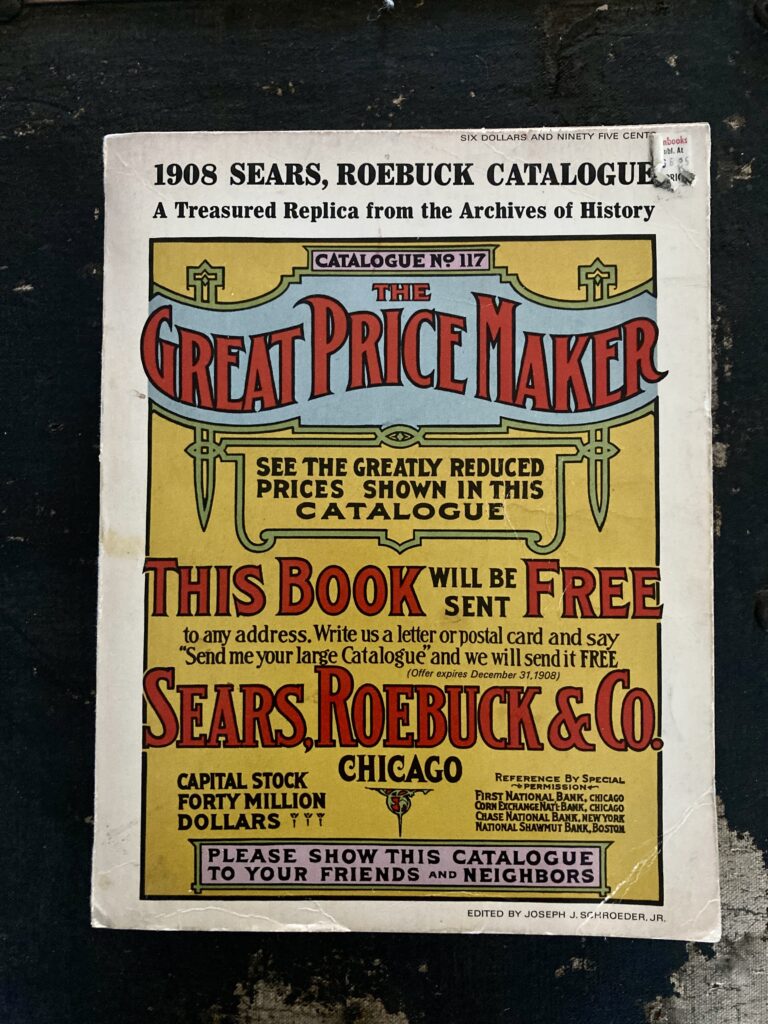
The turn of the century brought huge expansion to the company. In order to serve its growing customer base, the company built manufacturing plants across the country in order to cut costs and meet customer needs. By the time Richard Sears decided to retire in 1908, the catalog now offered everything from clothing to baby carriages to groceries to farm implements and even vehicles. In 1911, the company opened up the Sears testing laboratory enabling them to further perfect the quality of products sold.
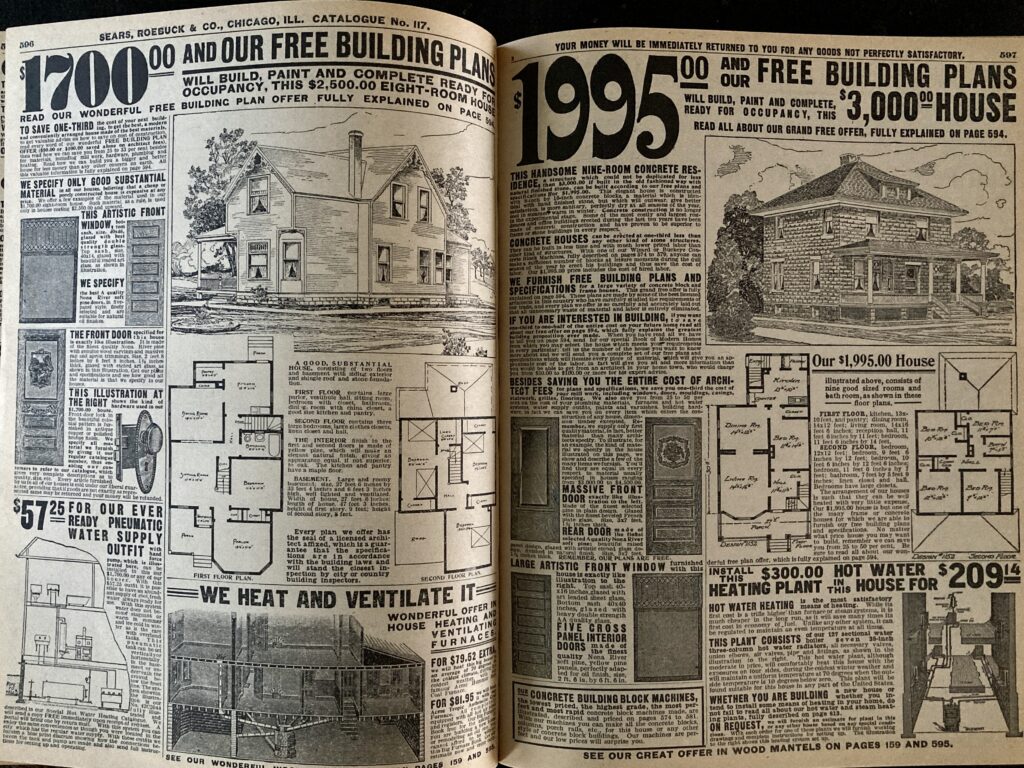
In 1908, the company began selling complete home kits. It’s estimated that through 1940 Sears sold between 70,000 to 75,000 complete home kits through the Modern Homes catalog. Many of these homes still exist today. There were nearly 400 models and myriad variations throughout the years. Sears not only offered kits of homes, there were barns, farmhouses, cabins, outhouses, and schoolhouses as well.
The first retail store opened in 1925 when the company realized that it’s customer base was mostly rural farmers and they were missing out on urban shoppers. Alongside the many items available for immediate purchase in the stores, there were thousands more available through the catalog which had grown to over a thousand pages.
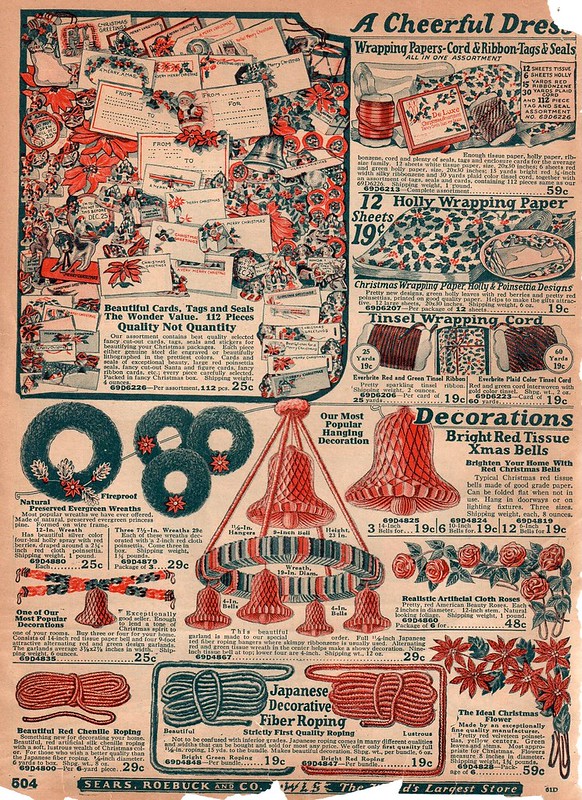
In 1933 the company introduced the first Christmas catalog. Every child born before 1990 remembers pouring over this fantastic plethora of toys, hoping to receive a few coveted items from its pages under the tree. But by 1941, many items had been discontinued due to the impending war. By 1949, the lines had grown to include televisions, dishwashers, and hearing aids. Despite popular belief, the Christmas catalog contained much more than toys. It was chock full of gifts for everyone in the family, which both helped to make it a favorite and lead to it being renamed The Wish Book in 1968.

The company grew exponentially throughout the 1950s and into the 1970s, with a new headquarters being completed in 1974. The newly built Sears Tower became the world’s tallest building at the time, cementing the company’s grasp on consumers.
Heading into the 80s and 90s, times were changing. The mighty catalog that had fueled consumer shopping around the world was no longer the top dog. The internet era was fast taking over and online shopping would displace catalog shopping quickly. By 1993, the Big Book was no more. Specialty catalogs such as Craftsman Tools, Workwear, and the Wishbook were still produced for several years but the 99 year reign of the iconic Sears Catalog had come to an end.
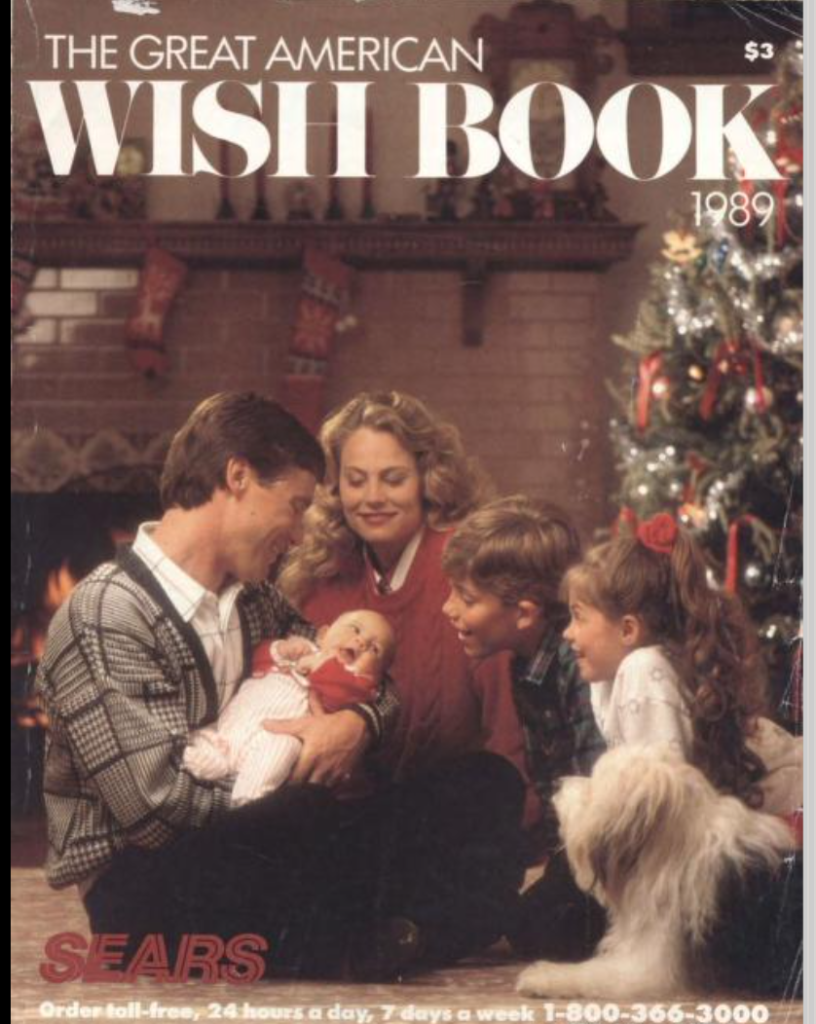
You can still shop Sears online, although the magic of flipping pages in the catalog, marking pages for future reference and finding that magical wonderland of goods in the mailbox are only memories. Although you can relive those days by purchasing replica copies of old catalogs, as well as vintage catalogs, but, of course, you can no longer order from them.
You can find more info about the Sears Roebuck Catalog through the Sears Archives website, or the Wikipedia Sears page.


